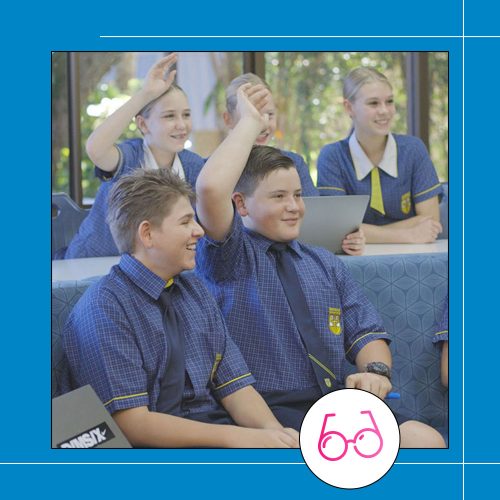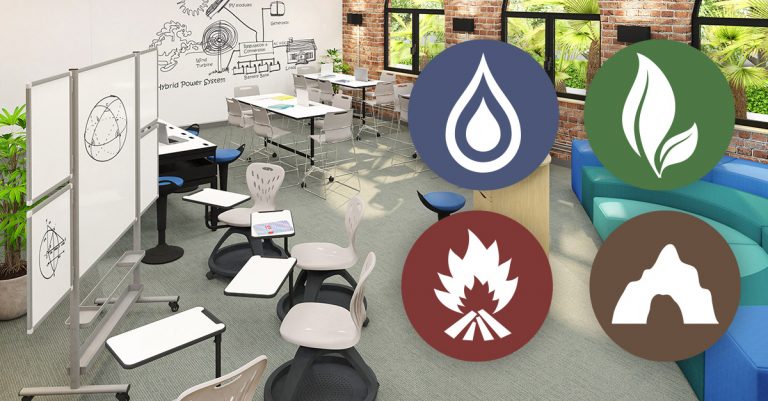These days, it seems like there are all sorts of theories and ideas thrown around concerning education. From the political to the practical, everyone speaks like they have all the right answers and everyone else is in the wrong. No matter if it’s a teacher, an administrator, or a parent, adults at every level of the educational hierarchy are constantly coming up with new and innovative ways to revolutionise the classroom and vastly improve the learning experience.
While well-intentioned, there’s an obvious problem with all this: Where do the students fit into this debate? Has anyone thought to ask the students how they feel? How they might like to change their education for the better? This is the central concept behind student voice. Understanding the definition of student voice might be the key to finally revolutionising education for good.
Defining Student Voice
At first glance, the concept of student voice might sound self-explanatory: the voice of the student, right? Well… not exactly. In truth, the actual definition goes much deeper than this simplification. See, student voice is not just the act of listening to the wants and needs of the students in regards to their education, but the weaving of those wants and needs into the very fabric of their education. In other words, the concept of student voice gives students an active role in the decision-making process on the issues that directly impact their schooling.
In order to work correctly, student voice has to be more than just hearing students out and listening to what they have to say. Rather, student voice initiatives has to lead to direct, perceptible results that the students can actually see in action. Without those visible results, student voice is more like a student whisper. When done properly, it’s hard to deny the benefits of student voice.

The Benefits of Student Voice
Student voice is more than just a theory: It’s a tried-and-true concept with real-world results. There are well-researched, meticulously documented examples from the past decade or so, with even more sure to come in the coming years. Throughout these examples, there are always a handful of consistencies:
Increased Engagement
As detailed in Department of Education reports from 2018, recognising student voice has the power to increase engagement in the classroom, resulting in more achievements and an overall growth in wellbeing amongst the student body. Over the long-term, this increased engagement is sure to lead to even more positive results.
Development of Leadership Skills
Implementing student voice in the classroom presents students with more opportunities to develop personal and social skills that, in turn, bolster their leadership capabilities. Compare this to the preconceived notion of the “fixed mindset” that leadership skills are something someone is born with, and it’s clear to see that these capabilities are much more than just some innate characteristic.
Creation of a Positive and Inclusive Environment
Recognising student voice also has the power to swiftly break down the barriers that marginalised students long fought to destroy, thus creating a far more positive and inclusive learning environment than anyone previously thought possible.
Higher Levels of Wellbeing
The wellbeing of a student body says everything about their classroom experience. If wellbeing is low, then we can assume that the student body feels ostracised and uninvolved as a result of not being heard. Higher levels of wellbeing are a direct result of more opportunities for substantial student participation. In other words, the more involved students are in the decisions that directly impact them, the higher their levels of wellbeing.
How to Promote Student Voice in the Classroom
Now that the thinking behind student voice is clearer, it’s time to start considering ways to promote student voice in the classroom and the educational system at large. The overwhelming number of benefits far outweigh the time and effort it will take to overhaul the flawed “normal” that students face in schools, and taking action to implement student voice is absolutely imperative at this point.
Of course, without the right tools and methods, this is something far easier said than done. Thankfully, there’s no need to jump in blindly and hope for the best — the methods below provide convenient and practical (and, most importantly, effective) ways for teachers to promote student voice in their classrooms today. No matter if you decide to take just one or choose to put all of these methods into play, you’ll be making the right choice by prioritising student voice.
Method #1: Routinely Check in With Students and Ask About Their Lives Outside of the Classroom Environment
Students come and go — this is an inevitable part of teaching, and it’s something each teacher knows all too well (especially in middle and high schools, where there’s a new batch of students every hour). For this reason, it can be hard to remember that each and every one of these students, year in and year out, has a life and a purpose beyond your sole classroom. While there’s only so much time in each class period, it’s well worth setting aside as little as a few minutes checking in with the students and seeing how their lives are going beyond the classroom.
This simple action lets the students know that they’re seen as humans, not commodities. By asking them about their hobbies, their interests, and their free time, they’re reminded that the teacher doesn’t view them as faces in a crowd, but as individuals. You can take this concept even further by allotting for individual conferences once a month, once a quarter, or once a semester — whatever works best for you and your lesson plan. The time is minimal, but the impact is enormous.
Method #2: Don't Just Ask for Student Feedback, Actually Take Their Feedback and Put It Into Action
All too often, students are asked how they feel about something and then ignored when the time comes to make changes. This makes them distant and unwilling to cooperate because they’ve been made to feel less than, like their opinions don’t have value. When you ask your students for feedback, you need to make sure that you’re actually willing to put that feedback into action when you’re making changes.
Regardless of if it’s feedback on an assignment, a test, a unit, or the class overall, student feedback provides much-needed insight into the way the students interact with what you give them. If you then choose to ignore what they have to say after asking them for their input, they’ll be less willing to work with you and will feel more inclined to blow off the work because they’ve been made to feel small and insignificant. It’s not enough just to ask – you also have to listen.
Method #3: Start off Each Class With Some Sort of Welcome Exercise
Odds are, most classes begin with some sort of warm-up. Brain teasers, word puzzles, questions of the day — all are ways to get the creative energy flowing and get students in the mood for learning. That’s why this shouldn’t be too much of an adjustment. Instead of starting with work, start with a welcome exercise that allows students to ask the questions instead of the teacher.
What’s an interesting piece of news they’d like to share? What’s going on in the world that they’re curious about? Anything along these lines not only allows for students to have their voices heard, it also allows them to clear their minds and prepare for the day’s lesson without them even knowing it. It achieves the same purpose as any one of these aforementioned warm-ups, but it doubles as a way for them to speak and be heard by their peers and by you, the teacher.

The Bottom Line: Strong Student Voice Starts With a Strong Learning Environment
One final method not yet mentioned is the idea of improving the flow of the classroom to subsequently improve the flow of student voice. The best way to do this is to consider a classroom redesign that promotes discussion and inclusion and does away with the strict sort of rigid classroom design the students are used to. To do this, turn to the authority on the classroom design conversation: BFX Furniture.
We combine our expertise on classroom design with our compassion for student voice to promote both strong student voice and strong learning environments. From desks to chairs to storage solutions and accessories, BFX has everything you might need to promote student voice through your classroom design.
Contact BFX today for expert advice that includes free on-site or online consultation, free 3D floorplans, and free board and fabric sample











